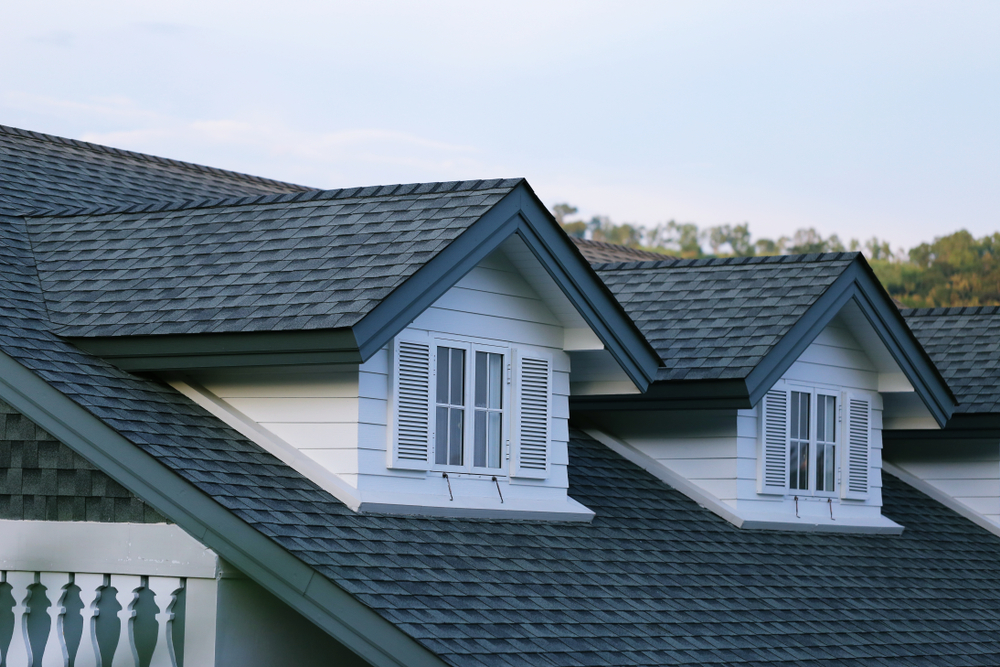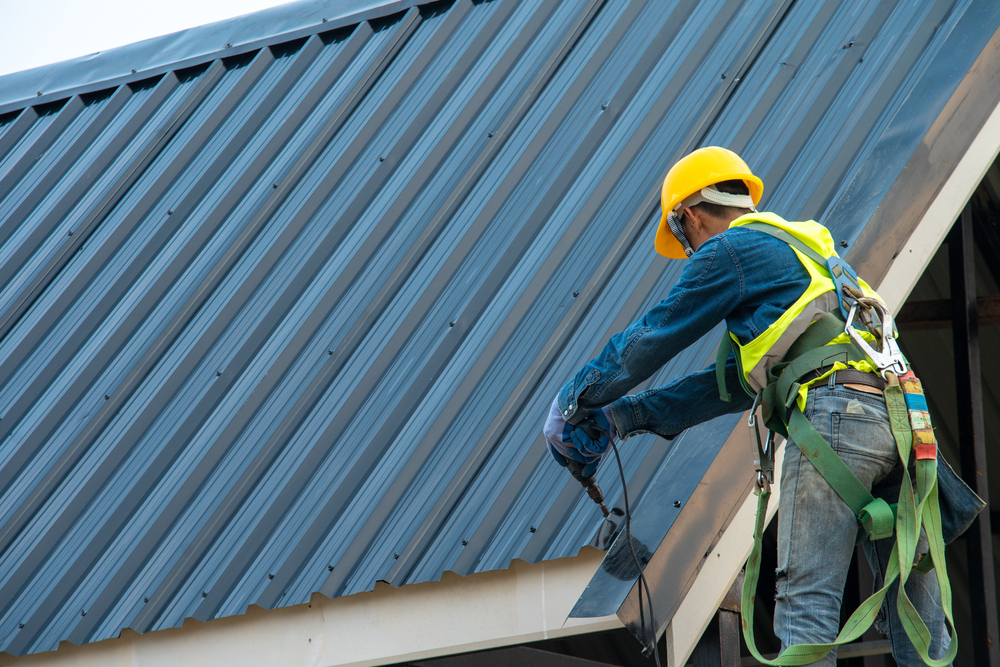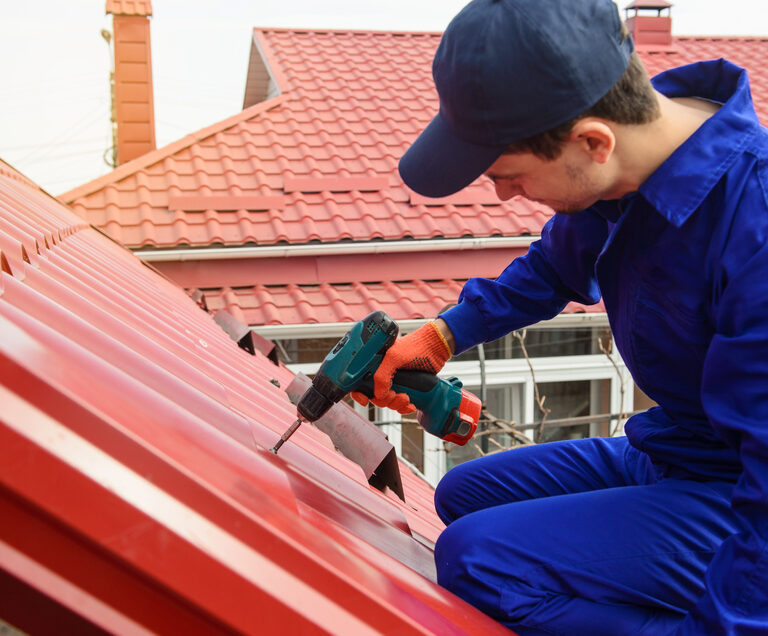When the time comes to install a new roof, comparing a metal roof vs. shingles is an excellent place to start. These are two of the most popular materials on the market, and looking at the pros and cons of each can help you decide.
Your roof is not only responsible for keeping wind and rain out of the home’s attic but also adds curb appeal that’s essential if you plan to sell anytime soon.
Here’s a comparison of metal and asphalt shingle roofs, giving you insight as you make this critical decision for the future of your property.
About Metal Roofs
It wasn’t long ago that you’d only find metal roofs on old cabins and barns. There’s a good reason for that, as these roofs have historically come as corrugated tin panels, which while functional, aren’t the best aesthetic for a house.
Fortunately, metal roofs have evolved, and they now come in materials like copper, steel, stainless steel, zinc, and aluminum. Aluminum is a trendy material because it doesn’t require an anti-rust coating, while copper really pops on a house’s exterior.
These roofs also now have more options than just panels, as you can select metal shingles, shakes, or slate-style roofs, and they now appear in multiple colors. As a result, you’re no longer limited by this material when going for a particular appearance.
This evolution of the metal roof has turned it into an option for homeowners all over the country. When you look at metal roofs, you can find nearly any look you’re going for, making this one of the most diverse materials on the market today.

About Shingles
Shingles are a prevalent roofing material found in nearly every neighborhood in the country. They typically have an asphalt construction, although newer variations are made of an asphalt-fiberglass blend for added durability.
While modern metal roofs are diverse in appearance, they have nothing on asphalt shingles. That’s because these products mimic the appearance of slate, tile, or cedar shakes and come in dozens of different colors. If there’s a particular look or style you’re going for, there’s a good chance you’ll find it in an asphalt shingle.
It doesn’t matter if you have an older home and are looking to create a classic look or a modern house with a futuristic vibe, there’s a shingle available to make your desired aesthetic.

Factors to Consider When Deciding on a Roof
When the time comes to choose between a metal roof or shingles, there are many different factors to look at that can influence your decision.
By looking at each of these factors, you can make a choice that best suits your home.
Durability
No matter which option you go with, it’s going to cost a chunk of money, so you’ll want to read up on the durability of these products. After all, selecting a roofing material that will last for years to come should be of the utmost importance.
From a durability perspective, metal roofs get the nod over shingles because they last longer. These roofs generally come with a lengthy warranty of between 30 and 50 years, although it’s not uncommon to see them last even longer. They barely show any wear either.
Metal roofs are also durable in the sense that they can withstand a lot of impacts. However, it’s worth noting that hail, falling tree branches, and other significant strikes can still damage these roofs.
Asphalt shingles are also quite durable but only have warranties of between 15 and 30 years. You’ll notice your asphalt showing some wear as they get older, especially if you live in an area with lots of moisture.
Damage can occur on these roofs because of severe strikes and environmental influences like pooling water, ice dams, and extreme temperature fluctuations.
If durability is your only concern, the decision is a no-brainer. However, the cost might also be an essential element when making your choice.
Cost
A cost breakdown has many variables because it depends on the roof’s size and how long the product takes to install.
However, the upfront price is where shingles make up some ground on metal roofs because they’re far less expensive products to purchase.
Roofing material estimates are measured by the square, which is a ten-foot by ten-foot area. Your contractor will measure out the number of squares you require before providing a quote on your roof installation.
By this metric, metal roofs can sometimes cost close to $1,000 per square. Naturally, the exact cost is dependent on the type of metal and the style you select, as a corrugated tin roof will cost far less than a roof made from stainless steel shingles.
Asphalt shingles generally run a few hundred dollars per square. Of course, the final cost of these items also depends on some variables, as high-end shingles in premium styles cost more and can even approach the price of a metal roof.
Remember that you might recoup some of the additional costs of a metal roof over time because it’s less prone to damage and likely to last longer. Therefore, your decision might come down to how long you plan to stay in your home.
Environmental Concerns
The environment is becoming an increasingly important topic for homeowners, so it’s nice to know that your roof can help address some of your concerns.
From an eco-friendly standpoint, metal roofs are far more attractive than shingles for multiple reasons.
First, most metal roofs come with a recycled material construction. And when the time comes to tear the old metal roof off the home, the material can be recycled again and turned into something else.
Asphalt can’t match these qualities, as they’re petroleum-based products that end up in landfills once they’re no longer useful. When you include their shorter lifespan, it’s easy to see that asphalt shingles provide a far greater environmental concern.
Energy-efficiency is a mixed bag, with metal and asphalt shingles performing better in different seasons.
In the summer, metal roofs are superior because they have reflective qualities that prevent the roof from absorbing the sun’s heat, keeping your home cooler.
There are specialized paints you can add to your metal roof, too, making them even more energy efficient in the summer. The result is energy bills that are lower during the warmest months of the year after switching to a metal roof.
However, asphalt shingles perform a little better in the winter because they absorb heat from the sun and transfer it inside the home. While metal roofs still perform adequately in the winter, and they won’t hurt your energy efficiency, you could notice a slight uptick in your heating bill if you switch from asphalt to metal.
The verdict is that a metal roof is better for the environment than shingles, both long-term and short-term.
Installation
Once you decide on a roof type for your home, it’s time to install it. Hiring a contractor is necessary unless you have roofing experience, and the amount you’ll pay depends on how long the installation takes and its difficulty.
For the most part, asphalt shingles are easier to install because they require basic tools and only a little specialized knowledge. Every roofing contractor in your area has experience working with asphalt shingles, and most can complete your installation in a day or two.
The result is a faster and less expensive installation, although roofs with extensive peaks and valleys or moisture problems in the insulation could increase costs.
On the other hand, metal roof installation can bring some challenges. While the material is lightweight, making it easier to carry to the top of your house, getting it in place isn’t always straightforward.
For starters, the job requires incredible precision because there’s less room for error with this product. The reason is that metal roofs can expand and contract with temperature changes. Too much fluctuation can ruin its waterproofing capabilities if the roof isn’t installed with due care.
Because of the necessary skills and tools you’ll need to install a metal roof, hiring an experienced professional is often the best way to go.
There’s also an additional step involved with installing a metal roof, as the contractor will lay OSB or plywood under the metal before beginning the job. This wood acts as a sound barrier so the homeowner won’t hear every little thing that lands on the roof. Keep in mind that some modern lightweight metal roofs can go right on top of the existing roof, eliminating this additional step.
Overall, installing a metal roof is a more extensive job and will take longer and cost more to complete.
Final Thoughts
The roof type you end up selecting will largely depend on your budget, desired appearance, and how long you want it to last. Some homeowners fall in love with the look of a particular shingle, while others appreciate the longevity metal roofs offer and their subsequent eco-friendly properties. Deciding on a roof comes down to what’s important to you and what you feel will give your home the best appearance and make it the most functional moving forward.
